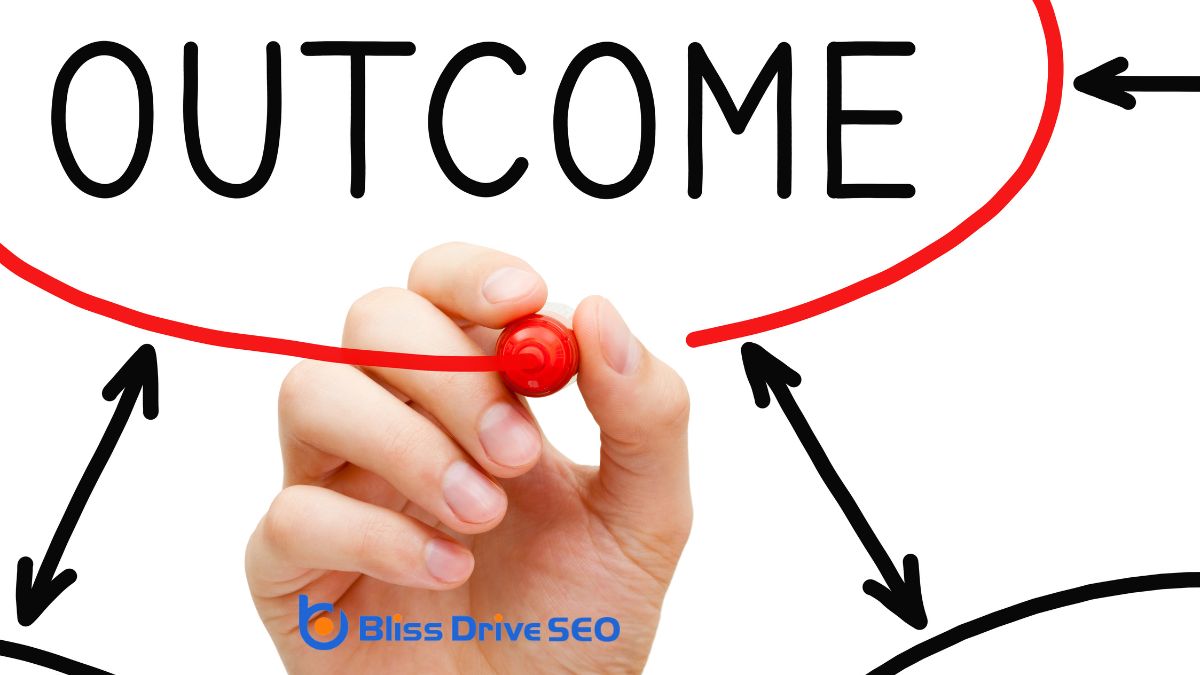Digital Marketing Services
Learn More About Us

You've gathered all the data and identified the key players, and now it's time to present your competitor analysisEvaluating the strengths and weaknesses of competitors’ SEO strategies.. But how do you guarantee your audience truly grasps the insights you're offering? Start by crafting a narrative that clearly outlines the industry landscape and positions each competitor. Use data visualizations to simplify complex metrics, making them easier to digest. Highlight the strengths, weaknesses, and unique selling propositions of each competitor. Your goal is to communicate strategic insights that inspire actionable outcomes. But what's the best way to engage your audience and foster a deeper understanding? Let's explore that further.

To effectively gather relevant data for competitor analysis, start by pinpointing your primary objectives and key metrics. Understanding what you're aiming to achieve guides your data collection process. Are you looking to improve your market share, enhance customer satisfaction, or innovate product offerings? Clear goals help streamline your research efforts, guaranteeing that you collect data that truly matters.
Next, utilize various sources to gather information. Begin with publicly available resources like company websites, annual reports, and press releases. These can offerThe specific product or service being promoted by affiliates. insights into competitors' financial health, product launches, and strategic initiatives.
Don't overlook social media platforms, where competitors often share real-time updates and consumer interactions. Engage with industry reports and market research studies for broader context and trends.
Online tools and databases can be invaluable. Use keyword analysis tools to assess competitors' search engine performance and identify popular content. Look into customer reviews and forums to understand consumer sentiment.
It's vital to verify that your data is timely and accurate, so check information from multiple sources.
To identify your key competitors, start by evaluating their market position to see where they stand in relation to your business.
Examine their unique selling propositions to understand what sets them apart and attracts customers.
Assess their strengths and weaknesses to uncover opportunities and threats that could impact your strategy.
Evaluating your market position starts by identifying key competitors who influence your industry landscape. Begin by researching companies that offer similar products or services. Look for competitors who target the same audience, as they play a vital role in shaping market dynamics. Consider both direct and indirect competitors. Direct competitors offer similar solutions, while indirect ones might fulfill the same needs through different means.
Once you've identified these competitors, assess their market position. Study their market share, pricing strategies, product features, and customer base. Use tools like SWOT analysis to evaluate their strengths, weaknesses, opportunities, and threats. This will help you understand how they stand in the market and impact your business.
Next, examine their marketing strategies and customer engagementThe level of interaction and involvement a customer has with a brand. approaches. Analyze their online presence, social media activity, and customer reviews. This information reveals their brand perceptionHow consumers view and interpret a brand's image and identity. and effectiveness in reaching their audience. By understanding their tactics, you'll gain insights into areas where you can differentiate yourself.
Finally, keep an eye on industry trends and innovations. Competitors can influence market shifts, so staying informed helps you anticipate changes. Regularly updating your competitor analysis guarantees you maintain a strong market position and make informed strategic decisions.
When identifying key competitors, it's crucial to understand their unique selling propositions (USPs), as these define what sets them apart in the marketplace.
USPs are the core attributes or benefits that competitors emphasize to attract customers. They can range from exceptional customer service, innovative technology, or unique product features. You need to pinpoint these USPs to understand how competitors position themselves and why customers might choose them over others.
Start by researching each competitor's marketing materials, such as their website, social media, and advertisements. Pay attention to the messages they consistently communicate—these often highlight their USPs.
Customer reviews and testimonials can also provide insights into perceived strengths that resonate with the market.
Another effective strategy is to analyze competitors' product offerings. Look at what they offer that you don't and how they communicate these differences.
Consider the specific needs they address and why customers might find them appealing.
Understanding the strengths and weaknesses of your key competitors is essential for developing a robust business strategy. By analyzing these aspects, you can identify opportunities to differentiate your offerings and anticipate challenges in the market.
You'll want to start by gathering data on your competitors' products, services, and market positioning. Pay attention to areas where they're excelling, such as innovative features, strong brand loyaltyThe tendency of consumers to continue buying the same brand's products or services., or superior customer service.
Once you've identified their strengths, consider how these elements might impact your business. Can you learn from their successes and apply similar strategies?
Conversely, weaknesses like limited distribution channels, outdated technology, or poor customer feedbackInformation provided by customers about their experience with a product or service, used to improve ... can present opportunities for you to gain an advantage. It's significant to analyze how these weaknesses can be leveraged to your benefit, perhaps by filling gaps in the market or offering improved solutions.
Competitive metrics serve as the backbone of any thorough competitor analysis. They provide a quantitative foundation to compare your business against others in your industry. To effectively analyze these metrics, start by identifying key performance indicators (KPIs) that matter most to your business goals.
Consider metrics like market share, customer acquisition cost, and revenue growth, which can reveal strengths and weaknesses in your competitors.
Once you've identified the right metrics, gather reliable data. You might use public financial records, market research reports, or analytics toolsSoftware used to track and analyze website performance, user behavior, and marketing efforts.. Verify the data is current and relevant; outdated metrics can skew your understanding.
As you collect information, organize it in a way that allows for easy comparison. This might mean creating spreadsheets or using specialized software.
Now, plunge into the analysis. Look for trends or patterns that provide insights into competitors' strategies. For instance, a rising market share might indicate successful marketing efforts, while high customer acquisition costs could suggest inefficiencies.
Use these insights to understand where competitors excel or struggle in the market. By focusing on the right metrics, you'll identify opportunities to refine your strategies and gain an edge over your competition.
To make your competitor analysis memorable, incorporate visual data representation to highlight key insights.
Use narrative flow techniques to guide your audience through the data, making it easier for them to grasp complex information.
A competitor analysis's impact often hinges on how effectively you can convey data visually. When you translate numbers and statistics into compelling visuals, your audience grasps complex insights more quickly.
Start by choosing the right type of visual representation for your data. Bar charts are excellent for comparing quantities, while line graphs show trends over time. Pie charts can illustrate proportions effectively.
Next, focus on clarity. Avoid cluttering your visuals with too much information. Each visual should tell a clear story at a glance. Use contrasting colors to highlight key points and guarantee that the text is legible. Labels and legends should be concise yet informative.
Consistency is essential. Use the same color schemes, fonts, and styles across all your visuals to create a cohesive look. This helps your audience follow along without unnecessary distractions.
Finally, remember that visuals should complement your narrative, not replace it. They should serve as a bridge between the data and your insights, enhancing understanding.
Incorporating narrative flow techniques into your competitor analysis transforms raw data into a compelling story. It's not just about presenting numbers; it's about weaving them into a narrative that highlights trends, insights, and potential strategies.
Start by setting the scene for your audience. Introduce the industry landscape and the main players, then guide them through the current market dynamics. This approach guarantees your audience isn't just informed but engaged.
To achieve this, consider using visual storytelling, which combines graphics with narrative elements. Here's how you can do it effectively:
Recognizing the pulse of your industry is essential when highlighting market trends. You need to keep your finger on what's changing in your market to stay ahead. Start by analyzing key industry reports, financial news, and expert opinions. These sources help identify shifts in consumer behavior, technological advancements, or regulatory changes that could impact your business landscape.
When you highlight these trends, focus on how they affect your competitors. Are they adapting quickly or lagging behind? Look at their new product launches, marketing campaigns, or changes in pricing strategy. This will give you insight into their response to market trends and help you position your analysis more effectively.
Consider using visuals like graphs or charts to make trends more digestible. People find it easier to grasp complex data when it's visually represented. Make sure to update these visuals regularly with the latest data to maintain accuracy.
Lastly, don't just state the trends; explain their significance. Why do these changes matter to your audience? How might they influence the competitive landscape? Providing context helps your audience understand the importance of these trends and prepares them to make informed decisions based on your analysis.
Effectively communicating strategic insights transforms raw data into actionable intelligence. When you share these insights, you're not just presenting numbers but telling a story that sheds light on your competitors' strengths and weaknesses.
It's essential to highlight the strategic implications of your findings, ensuring that your audience can grasp the broader picture and understand potential opportunities or threats.
To communicate effectively, consider these elements:

Communicate these actions clearly with your team.
Use compelling presentations or reports that highlight the benefits of each action.
Encourage feedback and collaboration, as diverse perspectives can refine strategies and spark innovation.
Finally, a system for monitoring progress and adapting as needed must be established.
Regular reviews will help you stay on course and respond swiftly to any shifts in the competitive environment.
With these steps, you'll turn analysis into success.
In wrapping up your competitor analysis, remember to focus on clarity and engagementThe interactions that users have with a brand’s content on social media.. You've gathered and analyzed essential data, identifying key competitors and market trends. By using visual storytelling, you've made complex metrics accessible and highlighted each competitor's unique strengths and weaknesses. Now, leverage these insights to drive strategic decisions and inspire actionable outcomes. Keep your audience's interests in mind, ensuring they leave with a clear understanding and direction for future success.
